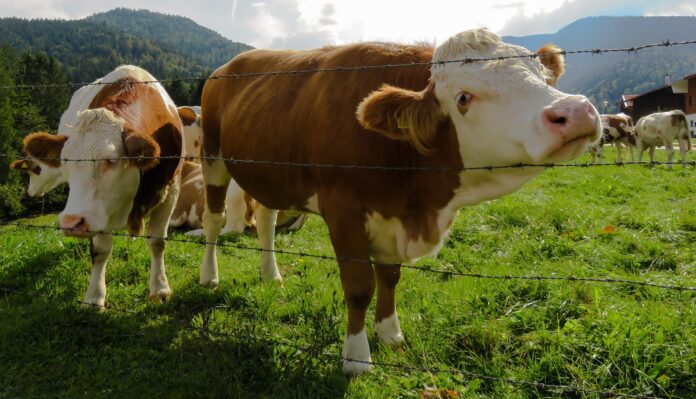STOCKTON, Mo. – “Now is the time to develop your cattle grazing forage base for the fall and winter months,” says Patrick Davis MU Extension Regional Livestock Field Specialist. Davis will discuss forage management and seedings that will reduce the need for stored feed resources as we move to the fall and winter months.
“Stockpile tall fescue now for a cheap feed resource as we move to the late fall and winter months,” says Davis. Start stockpile preparation by clipping or grazing fescue pastures to 3 inches. Then apply no more than 40 lbs. of nitrogen per acre to toxic endophyte infected fescue pastures. If the pasture is a novel endophyte infected fescue pasture, then 60 to 100 lbs. of nitrogen per acre can be added. Then defer grazing these stockpiled pastures until late fall or early winter. Davis urges cattle producers to defer grazing toxic endophyte infected fescue stockpile pastures until January when concentrations of ergovaline, which is toxic to cattle, have likely fallen below the toxic threshold level of 200 ppb.
“Add winter annuals to idle crop ground or weak stands of cool season perennial pastures to boost late fall and winter grazing,” says Davis. These winter annuals can be seeded in late August through September and provide cattle grazing opportunities from late fall through the winter months depending on the variety. Davis urges consultation with your local MU Extension Agronomy Field Specialist to plan the proper seeding of winter annuals to boost your cattle forage grazing resources through the late fall and winter months.
“Management intensive grazing will promote efficient cattle forage utilization during the fall and winter months,” says Davis. This type of grazing involves using permanent or temporary electric wire to allocate forage based on cattle needs. Davis urges cattle producers to allocate 3% of cattle body weight daily on a forage dry matter basis for grazing.
“Lower feed costs and optimum cattle operation profitability is achieved through the mentioned management strategies,” says Davis. These management strategies allow cattle to meet nutritional needs with cheaper feed resources than supplement and stored forages. Davis urges consultation with your local MU Extension livestock or agronomy field specialist for more information related to utilizing stockpile tall fescue or winter annuals in your fall and winter cattle grazing program. You may also find more information on these subjects at https://extension.missouri.edu/programs/nrcs-mu-grasslands-project or https://extension.missouri.edu/programs/native-grass-project.


















